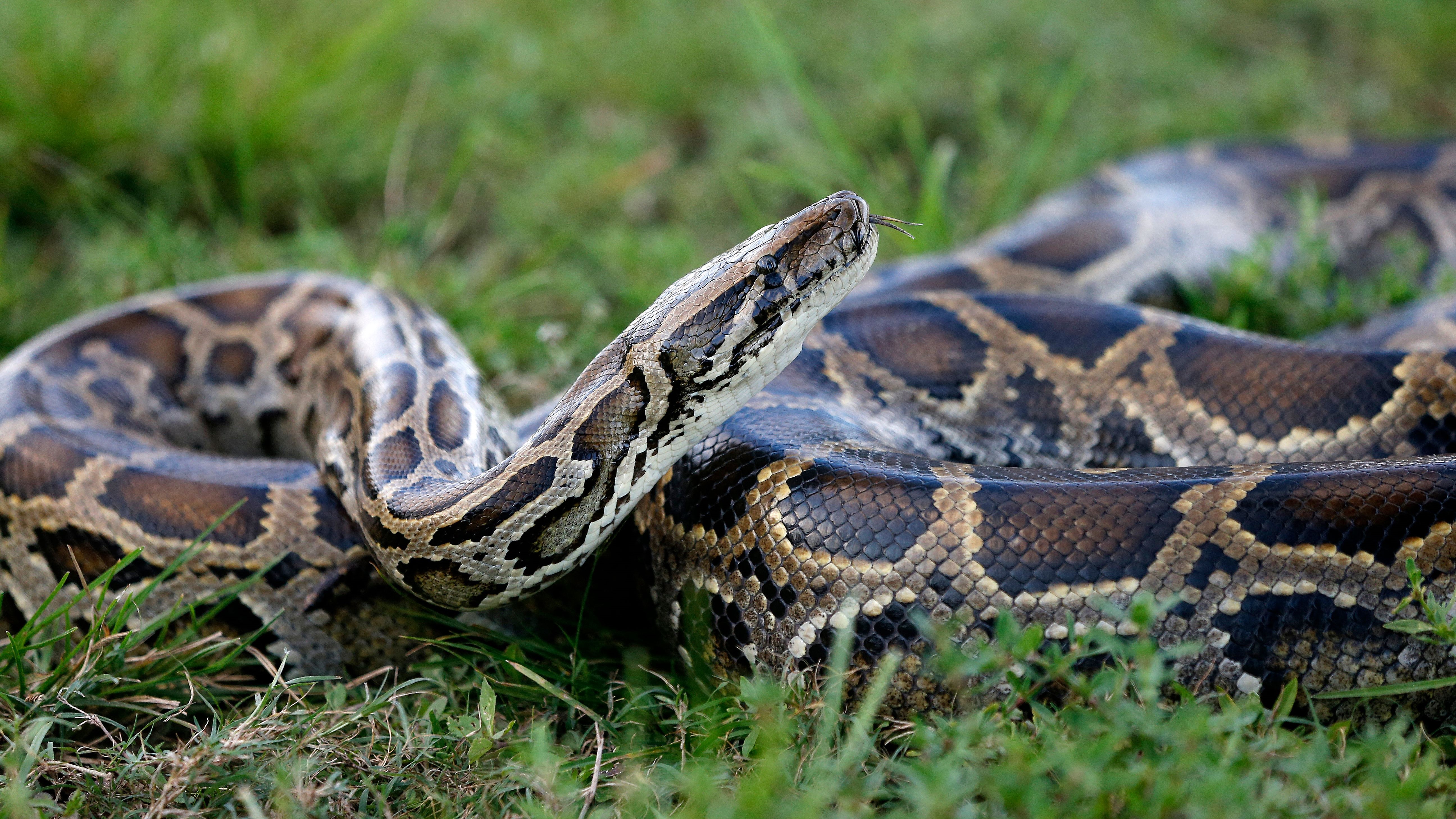
On Aug. 4, hunters in southern Florida will begin a cull of Burmese pythons as part of an annual competition to try and keep the invasive snakes' population in check.
Burmese pythons (Python bivittatus) are native to southeast Asia, where they slink through thick jungles, grasslands and swamps. But these snakes — which can grow to be more than 18 feet (5.5 meters) long — have also established an invasive population in southern Florida that has decimated local ecosystems, with the snakes devouring prey as large as deer and alligators.
Researchers aren't sure exactly how the animals gained a foothold in the state, but one theory is that the invasive snakes got their start in 1992 when Hurricane Andrew destroyed a reptile breeding facility near Miami, setting Burmese pythons loose across the Sunshine State.
But many experts say this is likely an oversimplification of the pythons' origin story.
In 1992, Andrew slammed into the Miami area as a Category 5 storm, quickly becoming one of the most destructive hurricanes in American history. More than 15 feet (4.5 m) of storm surge flooded the coast and over 10 inches (25 centimeters) of rain dropped in some areas, with wind gusts of about 167 mph (269 kph).
Related: Gruesome video reveals the moment a 5-foot alligator corpse was cut from the gut of a dead python
According to The New Yorker, a warehouse filled with reptiles in Homestead, Florida, just south of Miami, was destroyed during the storm — and one official told the magazine that he remembered seeing hundreds of Burmese pythons in that warehouse. When the storm destroyed the building, those pythons could have gotten loose in the swampy environs of southeast Florida.
Many wild animals did get loose during Andrew's landfall, and some newspapers reported sightings of large snakes in the storm's aftermath. But individual Burmese pythons have reportedly been spotted in the Everglades since at least 1979, with unconfirmed reports throughout the 1980s, according to a 2023 report.
The snakes were not commonly sighted in southern Florida until at least 1995. While that's three years after Andrew, the timing and geography of the python invasion don't fit with the storm theory, scientists say.
From 1995 to 2000, 11 pythons were sighted or captured in the southwestern part of Everglades National Park — miles away from the destroyed reptile facility in Homestead. "When the population started to grow initially, in the 1990s, most of it was 20 miles [32 km] away from that facility," Dan Simberloff, an ecologist at the University of Tennessee, told Live Science.
It wasn't until after the turn of the millennium that the snakes routinely showed up in the Miami area, near where the warehouse once stood.
Based on this geography and the population's growth rates, a 2011 study concluded that the simplest explanation for the Burmese python invasion is that a few individual snakes were released into the southern Everglades sometime before 1985, with the population growing slowly until the 1990s, before skyrocketing upward.

The 2023 report noted that a second, separate introduction of Burmese pythons may have occurred in southwest Florida, closer to Naples.
"While some believe Hurricane Andrew in 1992 caused the python problem, Burmese pythons had been detected here prior to that hurricane, as early as 1979. Several introduction events likely occurred in south Florida," a spokesperson for the Florida Fish and Wildlife Conservation Commission told Live Science via email.
This doesn't necessarily mean that Hurricane Andrew didn't contribute to the snakes' spread, however — it is possible that some snakes escaped from the pet trade during the storm and joined the feral population, experts said.
"If it was a multiple choice question as to how did Burmese pythons get into the south Florida ecosystem and (A) was 'Escaped Pet,' (B) was 'Intentionally Released,' and (C) was 'Meteorological Disturbances' — I would circle (D): 'All of the Above,'" Ian Bartoszek, an environmental scientist with the Conservancy of Southwest Florida, told Live Science.
Simberloff said that over the past two decades, research has shown that many invasive species that were thought to be a result of a single introduction were actually introduced in their new habitats multiple times. This includes the brown anole (Anolis sagrei), another reptile invasive to Florida.

About 17,000 Burmese pythons were imported to the United States between 1970 and 1995 for the pet trade — and with that many pythons coming in, it's entirely plausible that a few will be released by their owners.
"People can get tired of having a huge snake," Simberloff said.
Bartosek, who kept Burmese pythons as pets growing up in Florida, also noted that the snakes are "escape artists" — and it's possible that some pet snakes could have snuck out of homes and into the warm, prey-filled habitats of southern Florida. It is now mostly illegal to keep the species as a pet in the state.
The population of wild Burmese pythons in Florida is unknown, but estimates suggest there could be hundreds of thousands out there. Last year's Python Challenge saw 231 snakes removed from the Everglades, and while initiatives like this are helpful in controlling the population, eradication is currently out of the question.
"Eradication of the entire population across the landscape is not possible with any existing tools, whether applied singly or in combination," the 2023 report said.







